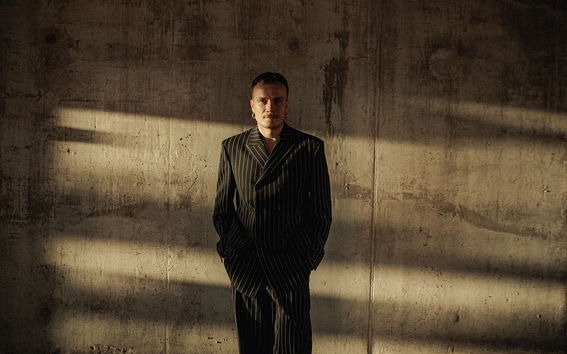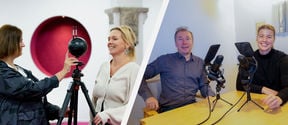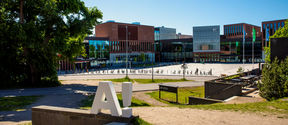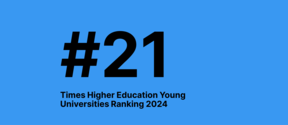Vesa Kemppainen: ‘An important quality in working life is an interest in new things’

What do you do for a living and why?
‘I work at Fiskars Group and I am the Art Director of the Fiskars brand. On my desk is what the Fiskars brand, familiar to Finns, looks like. As Art Director, I work in marketing and everything from packaging to in-store materials, campaign images and videos go through my hands.
I started my career at Fiskars as a content specialist and in six years I have progressed through a number of various roles to become an Art Director. This has been helped by the fact that I have gone into it with an open mind to a wide range of projects.’
What has your career path been like?
‘My career path has been a complicated one. I am a fashion designer by education. At school I felt I wanted to do storytelling and I did stylist work and theatre costume design while I was still at university. After school I started working as a store visualiser for Diesel. At Diesel I built shop displays and shop windows.
At some point I started to question the hard cycle of the fashion industry. I wondered if I could try doing something else for a living. In a way, I switched from fashion to lifestyle: before working at Fiskars I had, for example, opened a French interior design company Habitare in Finland.
I've always started quite locally. Nowadays I also have a large perspective on the global brand, as I'm in the decision-making part of the global marketing team.’
What have been the highlights of your career?
‘The highlights that come from work are the ones that make you grow. When I first started working at Diesel, I was allowed to do whatever I wanted on the job, and it was even expected.
In my current job, I am involved in global campaigns. The highlights are the moments when I see my own handprint, for example, a Fiskars Group advertisement on German TV.
When I was in my twenties, some things would have even seemed scary on the school bench, but now doing those it is my everyday life. When you say "yes" to things and move on, you never know where you're going to find yourself.'
What do you think are the most important qualities a graduate needs?
‘The most important thing I have taken from school in my backpack has been an understanding of taste. Because of my profession, I am often asked for my opinion. I can't say I don't like something because I don't like the colour, but instead I have to look at it from a target audience or brand perspective.
If you look at it from the point of view of the demands of today's working life, an important quality is an interest in new things. This applies, for example, to new tools such as artificial intelligence, which I don't see as a scary thing. Creativity and the ability to make creative decisions are also important for graduates.’
What is the best single lesson you learned from your school days?
‘When we students were struggling with a big project, our art history teacher Tuija Peltomaa said: "It's good to be anxious, that's how you know you're in the process". Creativity comes from thinking, which is why you have to give it space. And in study and working life, you have to be merciful to yourself. When I was at school, I loved the dialogue between students and lecturers.’
If you were studying now, what advice would you give yourself?
‘Many of my fellow students had some basic training, such as a dressmaker or pattern maker, before studying fashion design. If I had had some basic education myself, I would have matured my ideas a bit and had more basic knowledge.
I would also give the advice to remember to enjoy your studies. It's also worth being open to different options when it comes to choosing a career.
Going on an exchange as part of my studies was a great experience. After completing my bachelor's degree, I moved to Germany as an exchange student. I chose a school that allowed me to study art, nude painting and fashion illustration. The great thing about being an exchange student is that you realise that you can make it on your own in the world and in a foreign culture.’
What are your plans for the future?
‘I am now in my dream role. However, I have a good leg of working life ahead, and within the company, employees are encouraged to change jobs and progress in their careers. I don't know what the world will bring, but I see myself continuing to work creatively and with people.’
Text: Venla Välikangas
- Published:
- Updated:
Read more news

Seed funding available to boost collaboration between Aalto, KU Leuven and University of Helsinki
Aalto University, KU Leuven and the University of Helsinki launch the 2nd exploratory seed funding call to explore research collaboration possibilities. The funding call is open until 10 September 2024.
Workshop day for teachers: 360° environments and podcasts
On Tuesday 4.6. a workshop day consisting of 360° environment creation and podcast production provides a way to get to know these media in practice. Feel free to join both workshops or one of them according to your time and interest.
Professor Peter Hans Matthews works as a Fulbright-Aalto Distinguished Chair scholarship holder at the Department of Economics
Fulbright programmes and scholarships are highly appreciated in the United States